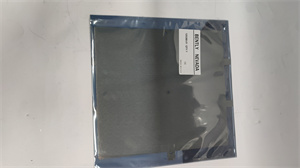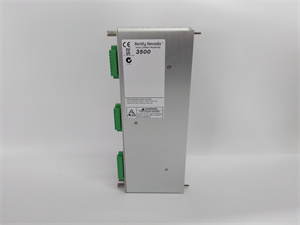Description
Key Technical Specifications
- Model Number: FFVO142 (P/N: 3BSE223732R0001)
- Manufacturer: ABB
- Output Channels: 4 independent Foundation Fieldbus H1 channels
- Output Type: 4-20mA DC (per channel, for FF device control/signaling)
- Protocol Support: Foundation Fieldbus H1 (IEC 61158-2), FF H1 physical layer (IEC 61158-2)
- Communication Speed: 31.25 kbps (FF H1 standard)
- Isolation: 500V AC (channel-to-channel), 1kV AC (output to backplane)
- Intrinsic Safety Rating: Ex ia IIC T4/T5 (ATEX/IECEx), suitable for Zone 0/1 hazardous areas
- Operating Temperature: -25°C to 70°C (-13°F to 158°F)
- Power Supply: 24V DC ±10% (19.2-28.8V DC), 8W max power consumption
- Fieldbus Segment Power: 12-24V DC, 100mA max per segment (powered via FF coupler)
- Protection Rating: IP20 (module), IP54 when installed in ABB AC 800M cabinet
- Certifications: IEC 61158-2, IEC 61010-1, ATEX, IECEx, UL 508C, CE
ABB FFVO142 3BSE223732R0001
Field Application & Problem Solved
In process industries—refineries, chemical plants, and LNG facilities—the biggest headache with legacy analog systems is the lack of two-way communication between controllers and field devices. You’d have a valve actuator running on 4-20mA, but no way to remotely check its position feedback or diagnose faults without sending a technician into a hazardous area. I saw this at a Gulf Coast refinery in 2022: a stuck relief valve on a distillation column went undetected for 3 hours because the analog module couldn’t transmit feedback—resulting in a $110k batch loss and a safety shutdown. The FFVO142 solves this by leveraging Foundation Fieldbus H1, enabling bidirectional communication that delivers both control signals and device diagnostics in real time.
You’ll find this module in three critical scenarios: controlling intelligent control valves in catalytic cracking units (where valve position feedback and fault alerts prevent process upsets), managing flow transmitters and actuators in pharmaceutical batch reactors (where audit trails and parameter tracking meet FDA requirements), and operating in Zone 0 hazardous areas of chemical plants (where intrinsic safety eliminates explosion risks). At a Texas LNG plant retrofit in 2023, we replaced 32 analog AO modules with FFVO142s—cutting unplanned downtime related to valve issues by 75% and reducing technician site visits to hazardous areas by 60%.
Its core value is connectivity without compromise. Unlike hybrid modules that mimic fieldbus functionality, the FFVO142 is a native FF H1 device—meaning it integrates seamlessly with other Foundation Fieldbus equipment without protocol translation delays. The intrinsic safety rating lets it operate in the most dangerous areas, eliminating the need for expensive explosion-proof enclosures. For plants aiming for digital transformation, this module turns passive field devices into active assets, providing data that optimizes maintenance and prevents costly failures.
Installation & Maintenance Pitfalls (Expert Tips)
Ignoring Fieldbus Segment Length Limits:
Rookies often run FF H1 segments longer than the 1900m (6234ft) maximum, causing signal degradation. A Colorado chemical plant strung a 2500m cable between the FFVO142 and a valve actuator—resulting in intermittent communication drops and false fault alerts. Stick to FF H1 guidelines: 1900m with 18AWG cable, 1200m with 20AWG, and 800m with 22AWG. Use a FF signal tester (ABB FieldMate) to verify signal strength (minimum 0.8V peak-to-peak) after installation. Add a repeater for longer runs, but limit segments to 32 devices max (including the module).
Improper Termination Resistors:
Foundation Fieldbus requires a 120Ω termination resistor at both ends of the segment—missing or incorrect resistors cause reflection errors. A Pennsylvania power plant forgot to install the resistor at the field device end; the FFVO142 couldn’t establish a stable connection with the control valve. Install ABB’s FF termination resistor (part 3BSE028149R1) at the module’s fieldbus port and at the last device on the segment. Never use a generic resistor—FF-specific resistors are rated for industrial environments and maintain stability over temperature.
Overlooking Segment Power Budget:
Each FF H1 segment has a limited power budget (100mA max for the FFVO142), and overloading it with too many devices causes brownouts. A Louisiana refinery connected 8 power-hungry valve positioners to one segment—resulting in the FFVO142 dropping offline under load. Calculate the total power draw of all devices (check manufacturer specs) and limit segments to 4-6 high-power devices (e.g., actuators with local displays) or 10-12 low-power devices (e.g., basic transmitters). Use a FF power conditioner if additional devices are needed.


ABB FFVO142 3BSE223732R0001
Technical Deep Dive & Overview
The ABB FFVO142 3BSE223732R0001 is a native Foundation Fieldbus H1 analog output module designed to bridge the AC 800M controller and intelligent field devices. At its core, a dedicated FF H1 communication processor manages data transfer between the controller and field devices, adhering to the IEC 61158-2 standard for reliable, low-speed (31.25 kbps) industrial communication. Each channel acts as a FF H1 master/slave interface—sending 4-20mA control signals to devices while receiving feedback (e.g., valve position, device status) and diagnostic data (e.g., overload faults, cable breaks).
Channel-to-channel isolation is achieved via optocouplers and isolated power rails, preventing cross-talk between segments and protecting the module from voltage transients common in industrial environments. The intrinsic safety design uses current-limiting and voltage-clamping circuits to ensure the module can’t generate enough energy to ignite explosive atmospheres—critical for Zone 0 applications.
What sets it apart from legacy modules is its ability to unlock the full potential of intelligent field devices. Instead of just sending a control signal, the FFVO142 can remotely adjust device parameters (e.g., valve deadband, actuator speed), retrieve historical data, and trigger self-diagnostics—all from the control room. The module communicates with the AC 800M controller via the native backplane, ensuring low latency and seamless integration with the DCS. It’s not just a signal converter; it’s a gateway to digital process control, built to withstand harsh industrial conditions while delivering the connectivity that drives efficiency and safety.







